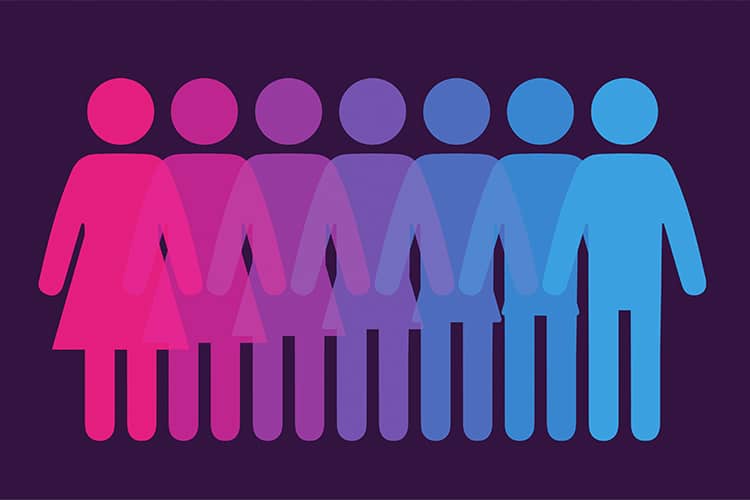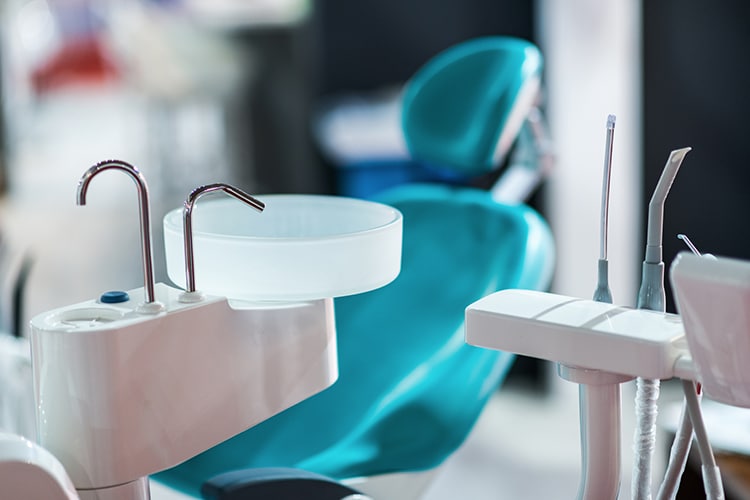Treating the Transgender Patient
Approximately 4.1% of the United States population identifies as lesbian, gay, bisexual, or transgender.

Approximately 4.1% of the United States population identifies as lesbian, gay, bisexual, or transgender. Research suggests that there are at least 1.4 million transgender people in the US, about 0.6% of the population. This estimate is likely conservative, as it is difficult to measure the entire population. Despite the increased visibility of transgender celebrities like Caitlyn Jenner, many people may not personally know anyone who is transgender.
Photo Credit: nito100 / iStock / Getty Images Plus

Barriers to Care
Transgender people also report high levels of discrimination from health care providers. For instance, 23% note that they did not seek needed health care in the previous year because they feared mistreatment. Similarly, 33% reported they did not seek health care within the past year when it was needed because they could not afford it. In fact, the unemployment rate of transgender people was found to be three times higher than the unemployment rate in the US at the time the survey was taken. Of those with insurance, 25% experienced problems with denied coverage related to their care. Multiple studies have shown that transgender people face barriers to health care caused by lack of adequate insurance coverage, bias from health care providers, and providers’ inexperience at treating transgender patients.
Photo Credit: ISerg / iStock / Getty Images Plus

Welcoming Patients
Promoting a welcoming environment not only encourages transgender patients to seek care, but may also increase their post-treatment compliance and the likelihood that they’ll return for follow-up appointments. Many transgender patients are prescribed hormones to align their bodies with their gender identity, and many undergo surgery, but hormones and surgery are not part of every transgender person’s experience. A transgender identity is not necessarily dependent on physical appearance or medical procedures. Efforts should be made to meet patients “where they are” without judgment or preconceptions. Oral health professionals should take care not to editorialize a patient’s gender identity, including making remarks about the person’s appearance. This effort will enhance the patient-provider relationship and avoid the perception of stigmas.
Photo Credit: adventtr / iStock / Getty Images Plus

Terminology
Vocabulary is important when communicating about transgender issues and identities. Gender is a set of social, psychological, and emotional traits, often influenced by societal expectations that classify an individual as feminine, masculine, androgynous, or other, whereas sex refers to birth genitalia and/or biological characteristics. The word transgender, sometimes written as just trans or trans* with an asterisk, is commonly used as an umbrella term to refer to an individual whose sense of gender does not correspond with the person’s birth sex. Some prefer a different vocabulary, choosing to identify as genderqueer, gender fluid, gender variant, bigender, pangender, etc.
Photo Credit: ronniechua / iStock / Getty Images Plus

Pronouns
Gender-nonconforming individuals may choose pronouns outside of the binary of “he” and “she.” Thus, they may choose pronouns such as ve, xe, or ze and the respective conjugations. Other gender-nonconforming people switch between gendered pronouns, using both she and he. A large portion of gender-nonconforming people ask to be referred to as they, choosing the plural pronoun and sidestepping the gendered use of she or he.
Photo Credit: EdwardSamuelCornwall / iStock / Getty Images Plus

Getting It Right
It is important to use the word transgender as an adjective. A person is not “a transgender,” but rather a “transgender person.” Avoid the extraneous “-ed,” as an individual is not “transgendered,” but, again, a “transgender person.” The term transsexual, though preferred by some, is often seen as outdated and may be considered inflammatory. Defamatory language includes terms like tranny and she-male. Many people, including health care providers, are fearful of using incorrect or disrespectful language when addressing or referring to transgender and gender-nonconforming patients. Transgender and gender-nonconforming people, as well as support networks, report that respectful mistakes are readily corrected with goodwill. All attempts should be made to respect and use a person’s chosen gender pronouns. Using someone’s unchosen name or gender pronouns may be considered disrespectful and can act as a barrier to care. It is important to note that one’s gender identity and sexual orientation are disparate. Someone can change from female to male (or vice versa) and be attracted to men, women, both, or not interested in sexual relationships at all.
Photo Credit: Anne-Marie Miller / iStock / Getty Images Plus

Oral Health Implications
As the oral mucosa, gingiva, and salivary glands contain estrogen receptors, variations in hormone levels directly affect the oral cavity. An overly severe inflammatory reaction, such as that often seen during puberty, menstruation, pregnancy, and menopause, should be expected in patients undergoing hormone therapies. Fluctuating sex hormones such as estrogen and progestin are associated with an exaggerated inflammatory reaction, hormone-influenced gingivitis, and increased instances of pyogenic granulomas. Gingivitis is more severe in times of changes or imbalances in estrogen and progestin levels. Hormonal variations may even influence changes in the periodontium. Sex hormones affect microcirculation producing swelling, adherence of granulocytes and platelets to blood vessel walls, increase vessel permeability, and disrupt the function of mast cells. Estrogen deficiency has been associated with the increased activity of immune cells and osteoclasts which may increase cytokine production, a protein associated with periodontal disease and bone resorption. In addition to a greater incidence of gingivitis and periodontitis, there may also be an increase in xerostomia, lichen planus, pemphigoid, Sjögren syndrome, and burning mouth syndrome, as observed during menopause.

